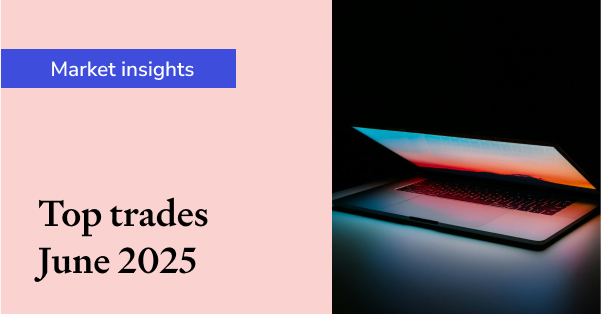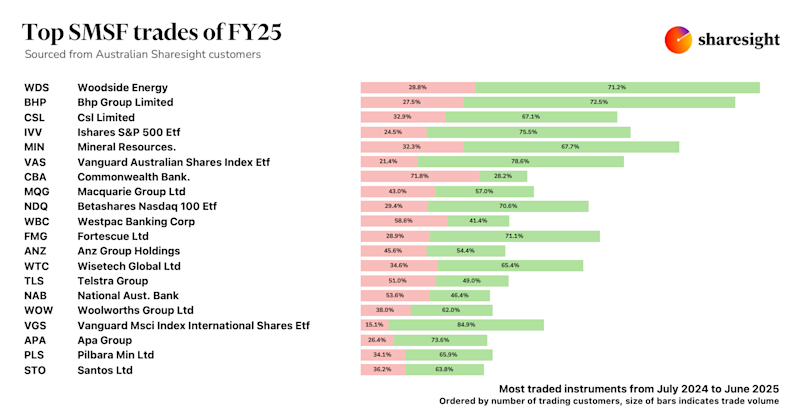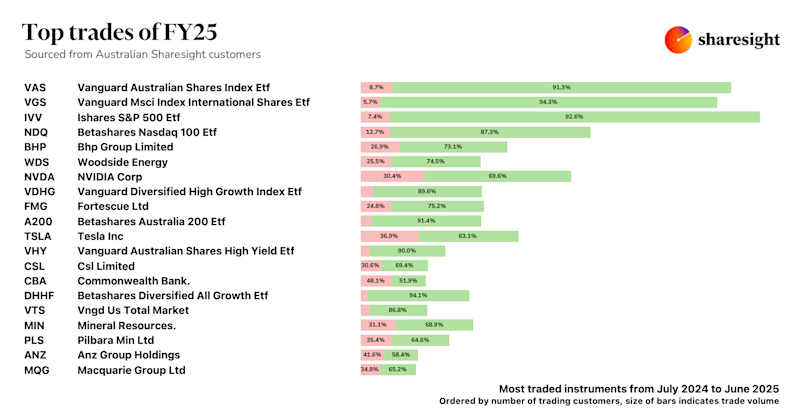How to create a balanced share portfolio
Disclaimer: This article is for informational purposes only and does not constitute a specific product recommendation, or taxation or financial advice and should not be relied upon as such. While we use reasonable endeavours to keep the information up-to-date, we make no representation that any information is accurate or up-to-date. If you choose to make use of the content in this article, you do so at your own risk. To the extent permitted by law, we do not assume any responsibility or liability arising from or connected with your use or reliance on the content on our site. Please check with your adviser or accountant to obtain the correct advice for your situation.
A balanced share portfolio is one that carefully strikes a balance between risk and return, ensuring that your investments are well-positioned for both growth and stability. The goal is to create a portfolio that is robust enough to withstand the inevitable fluctuations of the market, while still maintaining the potential to generate significant returns over time. Achieving this balance involves a strategic mix of various asset classes, each contributing differently to the overall risk and return of the portfolio. In this blog, we will explore practical tips and strategies for balancing your portfolio effectively. We’ll also delve into the different asset classes — such as stocks, bonds, real estate, and cash — that can help you diversify and manage both risk and profitability.

Why it’s important to have a balanced portfolio
When your portfolio isn't properly balanced, it can become too vulnerable to market fluctuations, which increases the risk of significant losses. For example, if you were to allocate the majority of your funds into technology stocks, they could be heavily impacted by a market correction in the tech industry, leading to a sharp decline in value. On the other hand, a portfolio that lacks enough growth assets may not provide sufficient returns over time, hindering your ability to meet your financial goals. A poorly balanced portfolio lacks diversification, which is essential for spreading risk and optimising returns. In the worst case, an imbalanced portfolio may leave you exposed to unnecessary risk or prevent you from achieving long-term financial success.
Types of investments that can be included in a balanced portfolio
Before choosing individual assets for a balanced portfolio, it’s important to understand the different asset classes and their respective levels of risk. These are:
Cash
Cash assets, including bank bills, term deposits and high-interest savings accounts, are often used by investors seeking stability and low risk. These assets provide short-term, predictable returns, making them an attractive option for conservative investors or those looking to preserve capital.
Cash investments are typically considered one of the safest asset classes because they are backed by financial institutions, and in most cases, positive returns are almost guaranteed as long as the bank remains solvent. While the returns on cash assets are generally lower than those of other asset classes like equities or real estate, they offer a level of liquidity and security that is hard to match.
Term deposits, for example, lock in a fixed interest rate for a predetermined period, ensuring steady returns, while high-interest savings accounts allow for easier access to funds with competitive interest rates. Although the potential for growth is limited, cash assets play an important role in balancing a portfolio by providing a stable foundation and helping to mitigate risk, especially during times of market volatility.
Bonds
Bonds are fixed-income securities that provide investors with regular interest payments in exchange for an initial investment. When purchasing a bond, investors lend money to an issuer — typically a government, municipality, or a large corporation — who agrees to pay periodic interest, known as the coupon, over the life of the bond. At the end of the bond's term, known as the maturity date, the principal amount (the face value of the bond) is repaid in full.
Bonds are generally considered a low-risk investment, especially when issued by stable entities such as governments or large, financially secure public companies. Because of their predictable income stream and relatively low volatility, bonds are often seen as a more secure alternative to equities.
The duration of a bond can range from short-term (1–3 years) to medium (4–7 years) or long-term (8–10 years), with longer-term bonds typically offering higher interest rates to compensate for the additional time and potential risk involved. Bonds can be a valuable component of a diversified portfolio, providing steady income and helping to offset the risks associated with more volatile investments like stocks. They are particularly attractive for conservative investors or those looking to stabilise their portfolios during periods of market uncertainty.
Equities
Equities, also known as stocks or shares, represent partial ownership in a company. When you purchase equity in a company, you are essentially buying a small stake, which entitles you to a portion of the company’s profits, usually in the form of dividends, as well as the potential for capital appreciation if the company performs well.
Equities are considered higher-risk investments compared to other asset classes like bonds or cash because their value is directly tied to the performance of the underlying company and the broader market conditions. If a company experiences poor financial performance, faces management challenges, or if the overall market declines, the value of its stock can decrease significantly. Despite this higher risk, equities offer the potential for substantial long-term growth.
Historically, stocks have outperformed other asset classes over extended periods, making them an attractive choice for investors seeking higher returns. In addition, equities can provide diversification benefits by adding exposure to different sectors, industries, and geographical regions, which can help balance a portfolio's overall risk. While the short-term volatility of equities can be unsettling for some, long-term investors often benefit from the compounding growth of their investments as the company expands and becomes more profitable over time.
Alternative investments
Alternative investments encompass a broad range of asset types that fall outside the traditional categories of stocks, bonds and cash. These can include tangible assets like real estate, as well as more unconventional options like cryptocurrencies, commodities, hedge funds, private equity, and even collectibles such as art or wine.
One of the key features of alternative investments is their ability to provide diversification in a portfolio, as they often have low correlation with traditional asset classes, meaning they may not move in the same direction as stocks or bonds during market fluctuations. However, the risks associated with alternative investments can vary widely depending on the asset and your familiarity with the sector.
For example, real estate can provide steady income through rental yields and potential appreciation, but it can also involve significant upfront costs, maintenance expenses, and market risks. On the other hand, cryptocurrencies are highly speculative and volatile, with prices subject to rapid fluctuations based on market sentiment and regulatory changes. Hedge funds and private equity may offer high returns, but they are generally less liquid and require significant expertise to navigate.
While alternative investments can potentially enhance returns and provide a hedge against market downturns, they also come with higher complexity and risk. It's crucial for investors to thoroughly understand these assets and assess their risk tolerance and financial goals before incorporating them into their portfolio.
How to build a balanced investment portfolio
In theory, a truly balanced portfolio should contain a 50/50 split between higher and lower risk assets. A commonly cited model is 50% bonds and 50% equities, for example.
But a 50/50 split isn’t the only option, nor do you need to limit yourself to a certain number of asset classes when balancing your portfolio. You might lean in either direction (a 60/40 split) depending on your individual preferences and financial circumstances, such as:
- Your age: If you’re older and depending on your investments for retirement or paying off the last of your mortgage, you may want to play it safe with more low-risk investments. Alternatively, an investor in their 30s might prefer to weigh their portfolio in favour of higher-risk assets because they have many years left to grow their capital and ride out short-term losses.
- Your risk appetite: Some people love the thrill of raising the stakes and riding volatile markets, whereas others will lose sleep over even minor losses. Consider your own capacity for risk when building your portfolio.
- Investment experience: You might decide to invest more heavily in a particular asset or asset class if you have deep knowledge of the sector. Alternatively, if you’re a relatively hands-off investor, it may be a good idea to keep your portfolio as balanced as possible.
Balancing your portfolio with an ETF
Once you decide on the balance of asset classes in your portfolio, the next step is choosing the individual assets. For newer investors, this process can feel overwhelming, as building a balanced portfolio from scratch often involves a lot of guesswork and trial and error without experience. Selecting individual stocks, bonds or other securities that fit your desired asset allocation can be time-consuming and may require a lot of research and monitoring.
One way to simplify this process is by investing in exchange-traded funds (ETFs). ETFs have become a popular choice for investors looking to diversify their portfolio because they offer an easy, cost-effective way to gain exposure to a broad range of assets. When you invest in an ETF, you’re essentially buying a share of a fund that holds a basket of underlying assets, such as stocks, bonds, commodities or even real estate. These assets are pre-selected and weighted according to the ETF’s investment strategy, so you don’t have to pick them yourself. This can be particularly beneficial for beginners who may not yet have the expertise or time to manage individual securities.
Different ETFs cater to different asset classes, sectors, and investment strategies, allowing you to tailor your portfolio’s exposure to specific themes or markets. For instance, there are ETFs that focus on technology stocks, international equities, sustainable investing, or even commodities like gold. Some ETFs are designed to track the performance of a broad index like the S&P 500, while others target niche sectors such as IPO equities, emerging markets, or offshore investments. By investing in several ETFs, you can quickly diversify your portfolio across multiple sectors, reducing risk and potentially enhancing long-term returns.
ETFs also provide liquidity, as they trade on the stock exchange just like individual stocks, giving you the flexibility to buy and sell at any time during market hours. However, as with any investment, it's important to understand the ETF’s structure, underlying assets, and fees before investing. Read our guide on what to look for when buying ETFs to ensure you're making informed decisions that align with your financial goals.
Rebalancing your portfolio
Markets change, as do your financial circumstances, so it’s important to periodically assess and rebalance your portfolio. For example, this could be done by:
- Selling some of your bigger holdings and using the cash to purchase more diverse assets
- Using new money to purchase extra assets on top of what you already have.
The first approach allows you to rebalance without having to invest extra cash, but the second approach lets you hold onto high performing assets that have grown to take up a bigger portion of your portfolio.
When to rebalance your portfolio
Annual rebalancing is generally sufficient unless you have extremely volatile holdings, but you can also rebalance as the need arises. For example, you might want to rebalance in response to:
- Market changes: Fluctuating asset prices can throw off the balance of your portfolio. For example, a relatively balanced portfolio containing 60% shares and 40% bonds will be tipped heavily towards shares if the share market doubles over a given period while bond prices remain the same.
- Personal needs: As you grow older and your financial circumstances change, your risk tolerance likely will too. For some, this means swapping out risky equities for safer investments like bonds or cash. Alternatively, you may choose to invest more aggressively as you build experience.
Average returns on a balanced investment portfolio
The average returns on a balanced portfolio can vary depending on several factors, including the specific asset classes involved, market conditions, and the time horizon of the investment. Factors such as fees and taxes will also have an impact on the portfolio’s returns.
That being said, a typical balanced portfolio, which consists of a mix of stocks and bonds (often around 60% stocks and 40% bonds), has historically generated average annual returns of around 6% to 8% over the long term. However, it is worth noting that past performance is not indicative of future results, and returns can vary year by year.
Calculate your asset allocation with Sharesight
If your goal is to create a balanced portfolio, it's important to have a clear picture of your portfolio's asset allocation. One easy way to determine this is by using Sharesight’s diversity report, which provides you with a breakdown of your portfolio’s asset allocation based on the classifications of your choice. You can run this report as many times as you like, over any chosen date range, making it a convenient way to track your asset allocation throughout the year and rebalance your portfolio as needed.

With the diversity report, you can determine your portfolio’s asset allocation by market, currency, sector, industry, investment type, country, or custom attributes of your choice.
Track your investment performance with Sharesight
If you’re not already using Sharesight, what are you waiting for? Join hundreds of thousands of global investors using Sharesight to track their multi-asset portfolios and make smarter investment decisions. Sign up and:
- Track all of your investments in one place, including global stocks, ETFs, mutual/managed funds, property and even cryptocurrency
- Automatically track your dividend and distribution income from stocks, ETFs and mutual/managed funds
- Run powerful reports built for investors, including performance, portfolio diversity, contribution analysis, future income, exposure, risk, multi-period and multi-currency valuation
- See the true picture of your investment performance, including the impact of brokerage fees, dividends, and capital gains with Sharesight’s annualised performance calculation methodology
Sign up for a FREE Sharesight account and get started tracking your investment performance (and tax) today.

FURTHER READING

Sharesight users' top 20 trades – June 2025
Welcome to the June 2025 edition of Sharesight’s monthly trading snapshot, where we look at the top buy and sell trades by Sharesight users in all markets.

Top SMSF trades by Australian Sharesight users in FY24/25
Welcome to our annual Australian financial year trading snapshot for SMSFs, where we dive into this year’s top trades by Sharesight users.

Top trades by Australian Sharesight users in FY24/25
Welcome to the FY24/25 edition of our Australian trading snapshot, where we dive into this financial year’s top trades by Sharesight users.